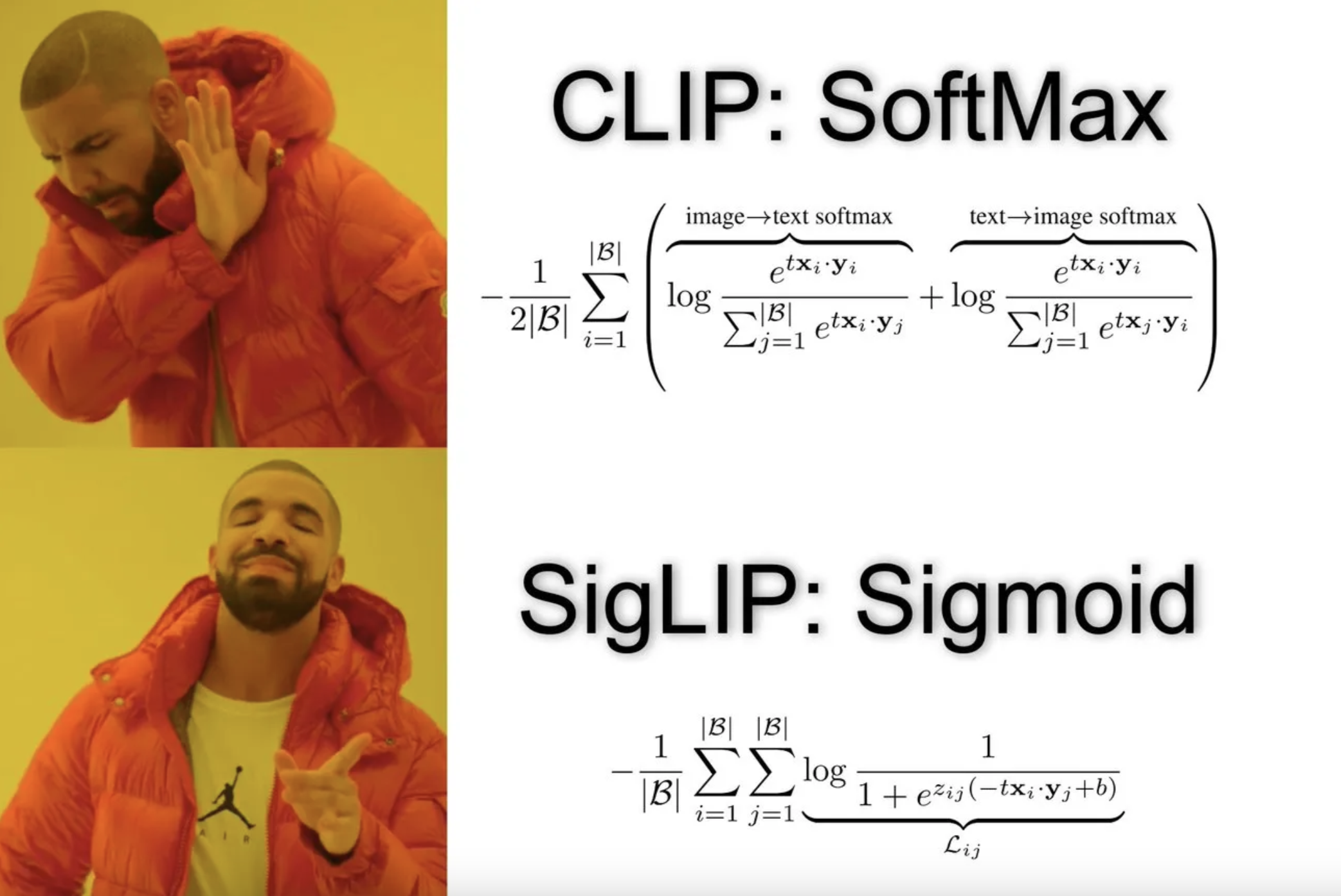SigLIP: Sigmoid Loss in Language Image Pretraining
Table of Contents
- Introduction
- Loss function: sigmoid vs cross-entropy
introduction
tldr: SigLIP - exactly like CLIP but with a sigmoid loss function instead of cross-entropy loss.
SigLIP builds on top of CLIP. Similar to CLIP, it's a way to enable AI models to understand both images and text together. Imagine trying to teach a computer to match pictures with their descriptions. That's what we call LIP (Language Image Pretraining).
We assume you have a basic understanding of how CLIP works. In case you don't, I would recommend reading my previous blog post on CLIP first.
Now, CLIP (which stands for Contrastive Language-Image Pretraining) was already pretty good at this. But SigLIP? It's like CLIP with a power-up!
issues with softmax loss:
loss function: softmax vs sigmoid
SigLIP just swaps out the original CLIP's loss function with a sigmoid loss function.
And, yes that's all.
Instead of performing the pre-training using cross-entropy loss, it uses a sigmoid loss function. This new approach helps the AI get even better at matching images and text, making it smarter and more accurate.

but why sigmoid loss is a game-changer?
Here's where SigLIP really shines because of the sigmoid loss:
-
Simpler loss function: Unlike CLIP's cross-entropy loss, which deals with probabilities across multiple classes, SigLIP's sigmoid loss boils everything down to a simple yes or no. Is this image a match for this text? Yes (1) or No (0). No complicated probability distributions needed!
-
No More Normalization Headaches: Cross-entropy loss requires normalizing probabilities across all classes. With sigmoid loss, we skip this step entirely. Each image-text pair is evaluated independently, making computations much more straightforward.
-
Scaling to the Moon 🚀: Because we're not dealing with probabilities or normalization, SigLIP can handle much larger batches of data. This means we can train on more image-text pairs at once, potentially leading to better and faster learning.
-
Efficiency Boost: The simplified loss function means less computational overhead. It's like switching from a gas-guzzling SUV to an electric car - you're getting where you need to go with much less waste!
-
Flexibility for the Win: Sigmoid loss allows for more flexible training setups. We can easily mix positive and negative samples in different ratios, giving us more control over how the model learns.
In essence, SigLIP takes the powerful concept behind CLIP and streamlines it. It's not about reinventing the wheel - it's about making that wheel roll faster and more efficiently than ever before!
References
- Xiaohua Zhai, Basil Mustafa, Alexander Kolesnikov, Lucas Beyer. SigLIP: Sigmoid Loss for Language Image Pre-Training. arXiv:2303.15343
- Alec Radford, Jong Wook Kim, Chris Hallacy, Aditya Ramesh, Gabriel Goh, Sandhini Agarwal, Girish Sastry, Amanda Askell, Pamela Mishkin, Jack Clark, Gretchen Krueger, Ilya Sutskever. Learning Transferable Visual Models From Natural Language Supervision. arXiv:2103.00020